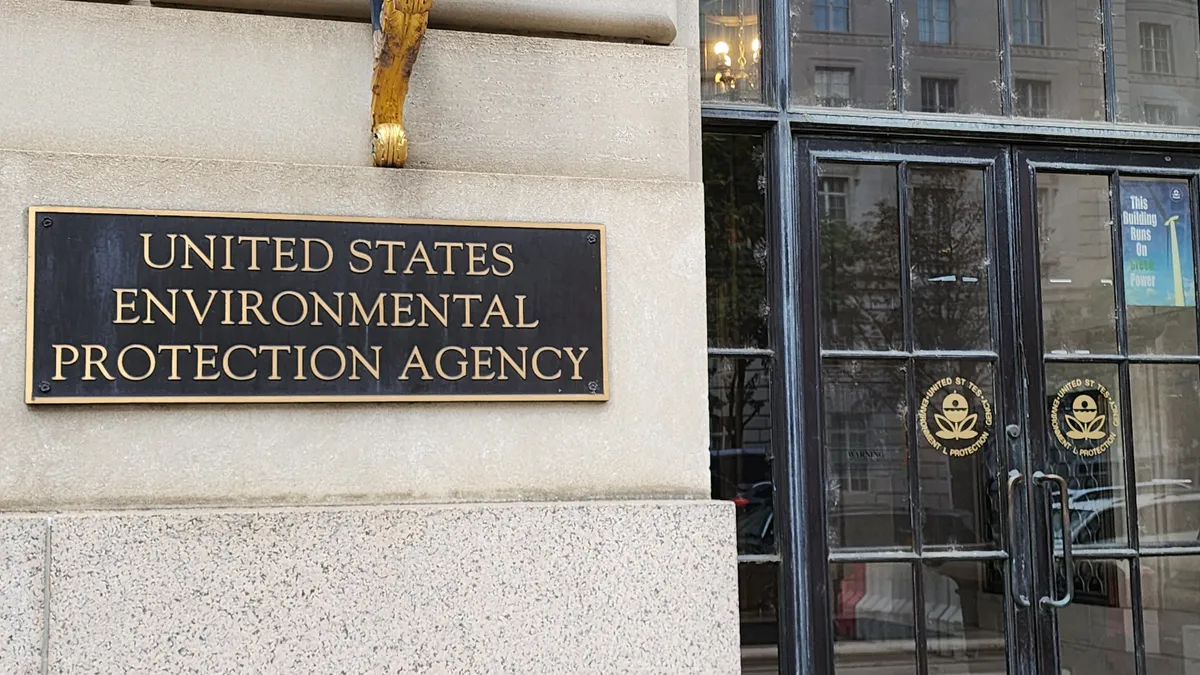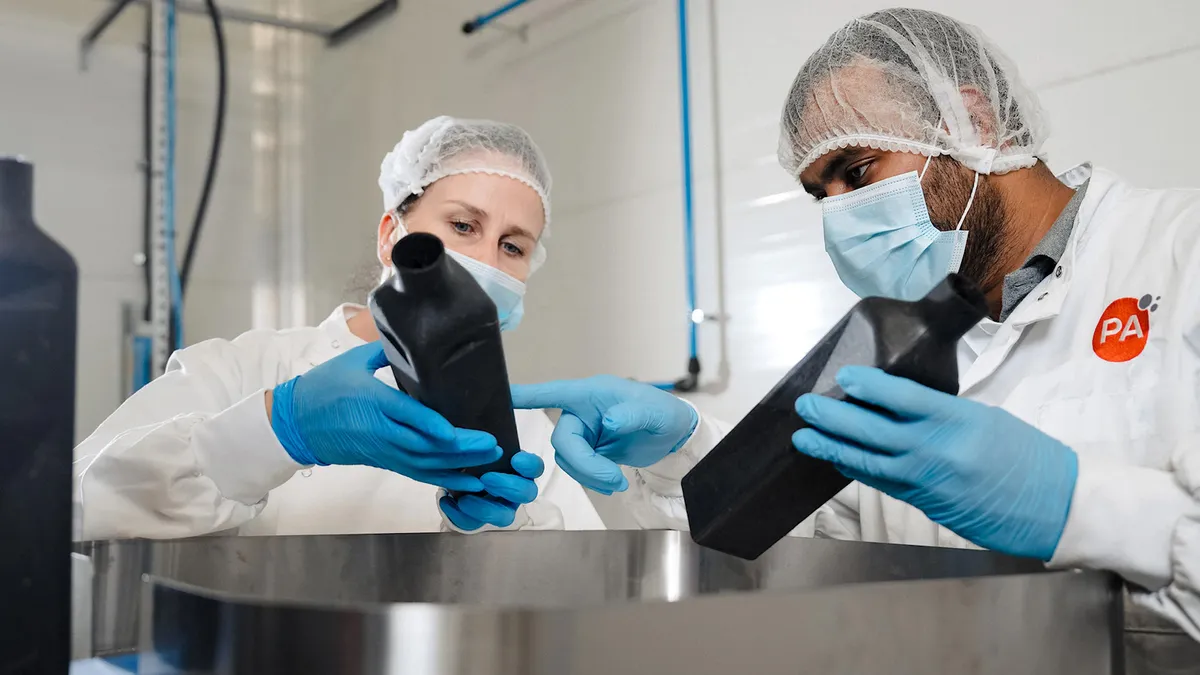Dive Brief:
- The U.S. EPA announced Thursday it is beginning the process to prioritize vinyl chloride for risk evaluation under the Toxic Substances Control Act. It’s a widely produced synthetic plastic polymer and building block for PVC, used in flexible plastic film wraps and other packaging.
- Vinyl chloride was in the news spotlight this year amid release resulting from the Norfolk Southern train derailment in East Palestine, Ohio. It’s one of five chemicals tapped for the yearlong statutory process, from which EPA could designate them as High Priority Substances. “Prioritization is the first step under EPA’s authority to regulate existing chemicals currently on the market and in use — to evaluate whether health and environmental protections are needed,” the agency explained in its announcement.
- The development could eventually lead to a possible future ban on the material. EPA expects the designations will occur, but it will continue to review the hazard and exposure potential of each chemical, how it’s used, how much it’s manufactured and other factors. The agency is encouraging companies that make and use these chemicals to participate in a 90-day comment period.
Dive Insight:
Concerns about the health impacts of vinyl chloride dating back to the 1970s spurred the passage of TSCA in 1976, EPA said. The agency said that vinyl chloride is a known human carcinogen and exposure “may result in a range of health effects such as liver toxicity.”
Between September and November this year, EPA said it met with industry, environmental and labor organizations, state and local governments and other stakeholders to select five chemicals from a list of 15 to prioritize for this process. In the announcement, EPA said the move is consistent with the current administration’s priorities toward eradicating cancer and advancing environmental justice.
Judith Enck, president of Beyond Plastics and former EPA regional administrator, called the step “one of the most important chemical review processes ever undertaken by the EPA.”
“Most vinyl chloride is used to make polyvinyl chloride (PVC) plastic, which poses significant health and environmental problems that have been known for over 50 years,” Enck said in EPA’s news release. “I applaud the EPA for launching this review.”
Ned Monroe, president and CEO of the Vinyl Institute, said in a statement that the organization and members “are fully prepared to work with the EPA during both prioritization and risk evaluation of vinyl chloride,” saying the step does not come as a surprise given EPA’s work plan. “We believe this risk evaluation will further assure that the production of vinyl chloride and use of PVC products are safe. Manufacturers of vinyl chloride adhere to some of the most stringent safety and environmental regulations in the chemical industry,” Monroe said.
Outside of the industry, environmental and toxics-focused organizations voiced support for EPA’s action.
“This action, along with action by states to restrict the use of PVC in packaging and building materials in favor of safer materials, will help communities thrive,” said Sarah Doll, national director of Safer States, in a press release shared by Toxic-Free Future. “The urgency of vinyl chloride’s threat means we need action from all levels of government.”
“Production of vinyl chloride and PVC is concentrated primarily in Texas, Kentucky, Louisiana, New Jersey, Illinois, and Mississippi. The facilities — predominantly sited in low-income and Black and Brown communities — release hundreds of thousands of pounds of vinyl chloride into the air each year, exposing workers and surrounding communities not only to vinyl chloride and dioxins, but also to asbestos, PFAS, and other toxic chemicals,” said Cynthia Palmer, senior analyst for petrochemicals at Moms Clean Air Force, in a statement calling for EPA to put an end to production and use of the chemical.
Among the other chemicals on Thursday’s list, chosen from the 2014 TSCA Work Plan’s list of chemicals identified for further assessment due to hazards and potential for exposure, is acetaldehyde, which is in part used to manufacture and process adhesive and intermediates for packaging. Others on the list include acrylonitrile, benzenamine and MBOCA, which are all used in part to manufacture and process plastics, plastic materials or resins. EPA called each of them “a probable human carcinogen.”
EPA said that going forward it expects to initiate prioritization on five chemicals each year, which it says will “create a sustainable and effective pace” for such evaluations. “Under the Biden-Harris Administration, EPA has made significant progress implementing the 2016 amendments to strengthen our nation’s chemical safety laws after years of mismanagement and delay,” said Assistant Administrator for the Office of Chemical Safety and Pollution Prevention Michal Freedhoff in a statement.















